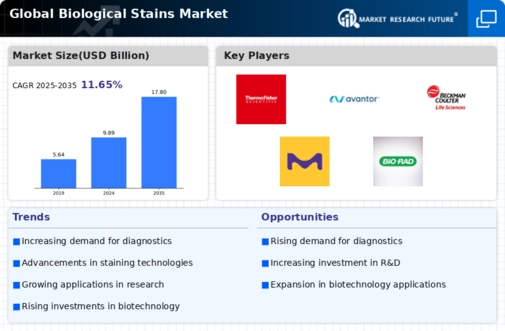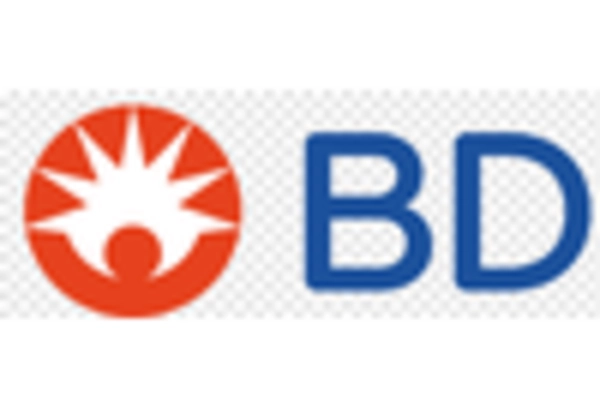Market Trends
Key Emerging Trends in the Biological Stains Market
The biological stain market is expanding due to research and diagnostic applications. Biological stains, such as dyes and reagents, are important for microscope images of cells and tissues. Many scientific domains are demanding accurate and complete cellular analysis, which is boosting the market. Technical advances in staining processes are recognized by market trends. Innovative stain compositions and methods increase biological stain specificity and sensitivity. These advancements include immunohistochemistry and fluorescence stainability. These advances improve research and diagnosis, driving the usage of newer staining procedures. Biological stains for in vivo imaging are in demand. Preclinical researchers are increasingly using stains to observe live cells and tissues in animal models. This trend aligns with the emphasis on real-time biological processes and affects medication development and disease model construction. Biological stains are needed because to the rise in chronic diseases including cancer and neurological disorders. Pathology and cytology employ these stains to identify and characterize diseased tissues. Biological stains are expanding in popularity as chronic diseases become more common worldwide, increasing the demand for effective diagnostic techniques. Molecular diagnostic technologies like nucleic acid staining for DNA and RNA analysis are becoming increasingly used in healthcare. Biological stains in molecular diagnostics enable genetic material visualization and marker identification. Personalized treatment using molecular diagnostics requires better biological stains. Growing demand for point-of-care testing, which involves on-site diagnostics, affects the market. Biological stains used in point-of-care diagnostics for infectious diseases may be in demand. This shift toward decentralized testing is changing biological stain diagnostics, which might have major repercussions. Personalized biological stains are needed to satisfy research and diagnostic needs. Manufacturers are investing more in stains with unique properties like increased sensitivity or imaging modalities. The scientific community needs more precise and sophisticated staining solutions, which explains this trend. Key biological stain rivals are always looking for ways to develop globally. They include product portfolio growth, strategic alliances with research institutions and healthcare providers, and entrance into unexplored areas. To address the diverse product needs of researchers and diagnosticians worldwide, we provide a broad assortment of biological stains. As biological stains proliferate, environmental sustainability becomes more critical. Manufacturers are researching water-based "green" staining solutions to lessen their environmental impact. This eco-friendly method meets global ethical and sustainable laboratory standards. Tight biological stain regulations are shaping the industry. Manufacturers prioritize safety standards and regulations to ensure product reliability and safety. This attention to compliance boosts market reputation and researcher, doctor, and laboratory professional trust.

















Leave a Comment